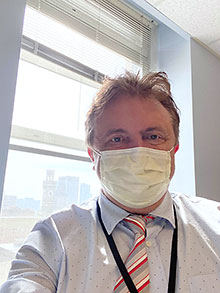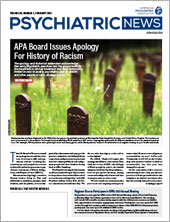This year, being outside has been a welcome reprieve for many Americans, allowing them to socialize safely with friends and family while escaping the confines of their homes. Yet as winter sets in and days shorten, experts fear the pandemic will exacerbate seasonal affective disorder (SAD) for a population that is already reporting alarmingly high rates of depression and anxiety.
“If overall depression rates are elevated, the risk of seasonal affective disorder may also be greater,” said Michael Thase, M.D., professor of psychiatry at the Perelman School of Medicine at the University of Pennsylvania.
For those individuals who have a tendency to feel low, moody, less motivated, and less excited by things that normally bring them joy around this time of year, then the other challenges that accompany the pandemic may further worsen those symptoms, Thase explained. “It’s both the negative and absence of the positive that make this pandemic so noxious from an anxiety and depression standpoint,” he said.
SAD is a form of depression, and it can become just as serious, causing the same symptoms as major depressive disorder such as fatigue, changes in mood, or loss of interest. About 5 percent of U.S. adults experience SAD, according to APA’s website, with the symptoms lasting about 40 percent of the year. The most difficult months tend to be January and February. Risk factors tend to be additive, Thase pointed out. Surveys have shown a significant jump in anxiety and depression since the pandemic began, which does not bode well for people who experience SAD in the winter months.
COVID-19’s biological underpinnings may also worsen SAD symptoms for some patients who have had the virus, hypothesized Teodor Postolache, M.D., professor of psychiatry at the University of Maryland School of Medicine. In a July 2020 viewpoint published in JAMA Psychiatry, Postolache and his colleagues pointed out that, as they noted in their previous published work, many infections that result in hospitalization such as COVID-19, “are predictively associated with suicide, and maximum behavioral effects can take more than 6 months postinfection to fully develop.” The COVID-19 virus may trigger priming in the immune cells in the brain, which could extenuate the individual’s vulnerability to mood disorders, Postolache told Psychiatric News.
Conversely, patients with SAD have elevated markers of immune activation, which could predispose them to a more severe and unremitting inflammatory response to the virus should they become infected, and thus a more severe and protracted course, Postolache explained.
“Once you have that additional vulnerability, you can see how the minute changes in someone’s life, plus the stressors that derive from not being able to function at your best academically, occupationally, or at home, may induce major mood episodes,” Postolache said. “My expectation is that COVID-19 is going to make things worse for patients with SAD, and SAD traits are going to make things worse for patients who have been infected with SARS-CoV-2.”
Additionally, during the fall and winter months, patients with SAD often crave carbohydrates, exercise less, gain weight, and have co-occurring metabolic abnormalities, which all represent risk factors for a severe course of COVID-19, Postolache pointed out.
There are three treatments for SAD that have been proven to work, Postolache said. Two are nonpharmacological, including light therapy and cognitive behavioral therapy. Pharmacological treatments can also be effective, and Postolache pointed to bupropion, which is the only FDA approved antidepressant for preventative and intermittent use in SAD patients.
“We don’t know as much as we’d like to know about SAD, but we know that it has to do with the circadian rhythm and a person’s natural biological clock,” said Aron Tendler, M.D., chief medical officer of BrainsWay. Those who are most susceptible to SAD are people who live in areas that receive significantly less sunlight during some parts of the year, such as Alaska, and those who already have been diagnosed with a mood disorder, he said. “People who might describe themselves as night owls might be more susceptible to SAD because they’re not getting the right amount of sunlight.”
Getting morning sunlight is best in the winter, Thase said, especially between 7 and 8 a.m. Evidence also suggests that light boxes can be beneficial for patients with SAD, allowing them to get the sunlight they need every day. Light boxes require only about 20 minutes a day and can improve SAD symptoms within a few weeks, according to APA’s website.
For psychiatrists who are expecting to see SAD emerge among their patients this winter, setting up a plan before the symptoms set in can be beneficial, Tendler said. They may want to set up scheduled virtual gatherings with friends, for example, or set a remind for themselves to reach out to loved ones or exercise. “Perfect is the enemy of good,” he said. “You don’t want patients saying things like, ‘I can’t exercise the way I want to, so I’m not even going to try.’ Exercising inside can have benefits, too.”
But just like other forms of depression, medication is an efficient treatment. “If you’ve tried exercise, social engagement, and the light box, then you may need to step up your level of intervention with medications,” Thase said.
Postolache emphasized that every patient is substantially different, both in regard to the pandemic and the accompanying stresses, but also in their vulnerability to SAD and responses to treatment. “When we think about SAD, we also have to perform differential diagnoses because many patients get depressed in the winter but don’t have SAD,” he said. “We have to think about one patient at a time.” ■
“Targetable Biological Mechanisms Implicated in Emergent Psychiatric Conditions Associated With SARS-CoV-2 Infection” is posted
here.

